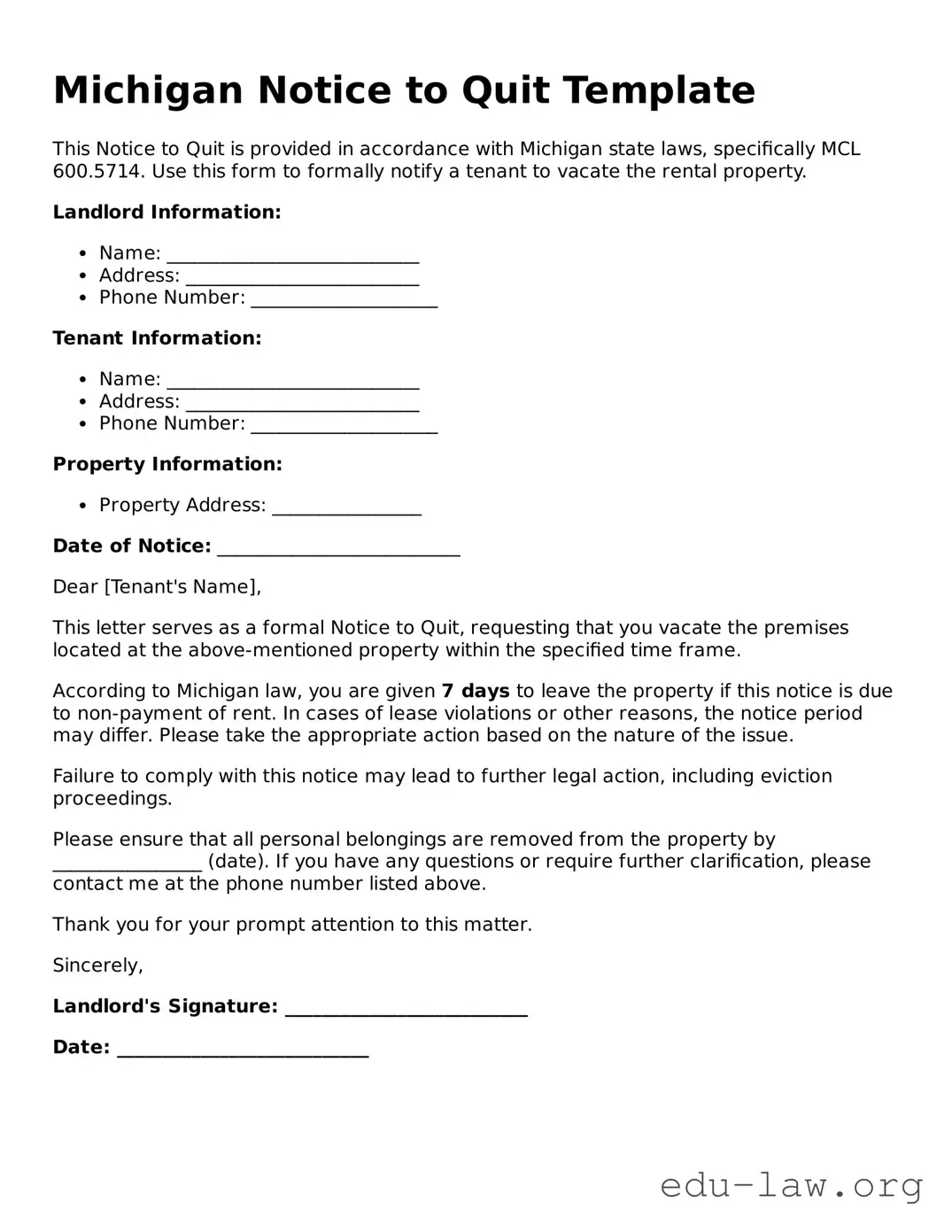The Michigan Notice to Quit form is similar to the Eviction Notice, which is a document served to a tenant to inform them that they must vacate the rental property due to a breach of the lease agreement or failure to pay rent. Both documents serve as formal notices that initiate the process of eviction, providing a specified timeframe in which the tenant is expected to respond or leave the premises. These notices often outline the specific reasons for the eviction and may provide details about the tenant's rights during the process.
Another document with similarities is the 3-Day Notice to Pay Rent or Quit. This form specifically addresses situations where a tenant has failed to pay rent on time, giving them three days to either pay the overdue rent or vacate the property. The urgency of the 3-Day Notice is akin to the Notice to Quit, as both aim to quickly resolve issues between landlords and tenants while following legal requirements.
The Unconditional Quit Notice is also comparable to the Michigan Notice to Quit. Unlike a standard Notice to Quit that may allow a tenant to remedy the issue, an Unconditional Quit Notice demands that the tenant vacate the property without offering the opportunity to fix any violations. This document is typically used in more serious cases, such as repeated lease violations, making it a more severe form of notice.
The Lease Termination Notice resembles the Michigan Notice to Quit in that it notifies a tenant that their lease agreement will not be renewed once it expires. While the Notice to Quit may center on a specific breach or immediate issue, the Lease Termination Notice serves as a formal indication that the lease will end, advising tenants well in advance.
The Proper Notice of Rent Increase is another document that shares some characteristics with the Notice to Quit. This notice informs tenants that their rent will rise, usually in accordance with state laws and lease terms. Though not an eviction notice, it serves to communicate financial changes that might lead tenants to reconsider their living arrangements.
The Cure or Quit Notice is an essential document similar to the Notice to Quit. This type of notice informs tenants that they have a specified period to correct a lease violation, such as unauthorized pets or excessive noise. If the violation is not remedied, tenants must vacate the property, making this notice another step in the landlord's efforts to enforce lease terms.
The Summons and Complaint for Eviction is often the next step following a Notice to Quit. This legal document formally initiates the eviction process in court after the landlord has given the tenant a chance to leave voluntarily. While the Michigan Notice to Quit serves as an initial warning, the Summons and Complaint signals that the landlord is taking legal action.
The Ten-Day Notice of Non-Renewal may also echo the intent of the Notice to Quit. It informs tenants that their lease will not be renewed after its expiration. While it doesn’t necessarily indicate lease violations, it serves as formal communication that the landlord intends to regain possession of the property.
A Demand for Possession is another document similar in function to the Notice to Quit. This document is often required by state law to request that a tenant vacate the property due to noncompliance with the lease. Like the Notice to Quit, it formally informs the tenant of the consequences they face if they do not address the issues at hand.
Finally, a Notice of Lease Violation is akin to the Notice to Quit as it communicates to tenants that they have violated their lease agreement and the potential consequences. This document outlines specific violations and, much like the Notice to Quit, can lead to subsequent eviction actions if issues are not resolved within a given timeframe.
